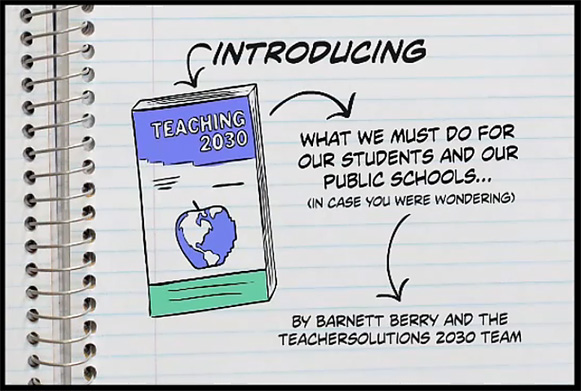.
Also see:




Models for the Future of Learning — from KnowledgeWorks by Katherine Prince, Jesse Moyer, Lisa Scheerer, and Jamie Feltner
January 2011
This report was prepared for, and with the support of, Yellow Springs School District as part of a series of engagements related to its Class of 2020 initiative.
.
.
From DSC:
How will these types of technologies affect what we can do with K-12 education/higher education/workplace training and development? I’d say they will open up a world of new applications and opportunities for those who are ready to innovate; and these types of technologies will move the “Forthcoming Walmart of Education” along.
Above item from:
(CA) A Season for Turnaround — from Conditions of Education in California by Alan Daly
…the federal government offers four ‘turnaround’ models:
In California the ‘transformation’ model is the one most frequently chosen.
(NY) Layoffs would hit some schools much harder — from WSJ
(MI) Michigan orders DPS to make huge cuts –– Detroit News
Bobb told to consolidate services, close half of schools to end deficit
[2008/09] Study: Hands-on projects may be best way to teach engineering and technology concepts — from Purdue University as reported by Kim Medaris
From DSC:
This study focused on 126 eighth graders from Indiana; it presents one perspective on teaching STEM-related topics.
ABSTRACT:
Exploring the Effectiveness of an Interdisciplinary Water Resources Engineering Module in an Eighth Grade Science Class
Jody L. Riskowski, Carrie Davis Todd, Bryan Wee, Melissa Dark, Jon Harbor
Engineering education has historically been given little attention in U.S. K-12 classrooms even though engineering incorporates scientific and mathematical concepts into meaningful, everyday applications. Including engineering and design projects in K-12 science and mathematics classes may improve student interest and comprehension, while also reaching a broader range of students than traditional lecture-based classes. For this study, the authors implemented an engineering design project focusing on water resources in 8th grade science classes. Students were exposed to either an engineering project (treatment) or a more traditional format (control) and their knowledge of water resource issues was evaluated using a pre-post assessment tool. Overall, students in the treatment classes showed statistically significant improvement in two areas – they displayed higher levels of thinking on open-ended questions and greater content knowledge. This research indicates the effectiveness of engineering in enhancing student learning and supports its inclusion in the middle school science curriculum.
Also, potentially relevant here is:
Google Apps taking commercial vendors to school — from blogs.wsj.com by Michael Hickins
The Google Apps for Education application set is gaining traction among school districts across the country, in many cases replacing commercial vendors like Microsoft. Google signed up Oregon and Iowa for its suite of Web-based email and collaboration applications last May and June, respectively, and three other states have joined since then, most recently New York State, according to Shan Sinha, group product manager for Google Apps.
There are now more than 10 million students using Google Apps, including many of New York State’s 3.1 million student population, said Sinha. In addition to the applications used to do things like send email or edit documents collaboratively in real time, the suite includes access to third-party applications like Endgrade Gradebook and lesson plan software for teachers, and administration applications like Class.io or Thinkwave for IT administrators. The apps are available through the EDU category of the Google Apps marketplace.
.
Also see:
From DSC:
State tells Bobb to implement ‘draconian’ plan to close half of Detroit schools, raise class sizes — from mlive.com by Darrell Dawsey
Robert Bobb has been given the go-ahead to implement a plan that even he says will essentially destroy the Detroit Public School system.
Supplementing your art budget — from the teachingpalette.com
Middlebury College takes language program online for younger students — from The Journal by Dian Schaffhauser
In a Web 2.0 world the drill and practice that makes up much of the standard fodder for many online language courses seems quaint. But a start-up promises to immerse high school students online in the same way that certain successful programs do face to face through video, audio, and avatars plunked down into foreign settings. Middlebury Interactive Languages is a joint venture announced in April 2010 between renowned language institute Middlebury College and K12, a company that operates online learning programs for K-12 worldwide. In January 2011 the venture launched its first offerings for Spanish and French, which will be available for fall 2011.
The answer to teacher retention: Find passion (not data) driven schools — from The Innovative Educator
From DSC:
It seems to me that this principle — of finding ways for students to pursue their passions — doesn’t just benefit teachers (in terms of retention). It also greatly benefits the students, and would help develop more of a love of learning.
Learning Graph + Reputation Graph = Massive Disruption in Higher Ed? — from Jon Bischke
From DSC:
Jon gets at something similar to my thoughts on cloud-based learner profiles. Jon links to — and also see — Kirsten Winkler’s posting from August 2010:
January Series guest Sajan George on Inner Compass this Sunday
Transforming Troubled Schools
A factory still using production systems from the 1950s would not make sense in today’s technological world. Unfortunately, some K-12 schools still use decades’ old educational techniques and policies. January Series guest and turnaround specialist Sajan George describes progressive technologies and approaches currently under consideration to turn around troubled school districts. Karen Saupe hosts.
Airs this Sunday on local PBS station WGVU-TV at 1:30 p.m. (channel 35 & cable channel 6 in G.R. and channel 52 in Kalamazoo.) National broadcast topics, dates and times vary.
Inner Compass episodes may also be viewed after local broadcast through:
— www.calvin.edu/innercompass
— iTunes Store podcasts section
— and other methods for thos in the Grand Rapids, MI (USA) area

From TeachMoore blog by Renee Moore
.
Addendum (2/12/11) — also see:
Clayton R. Wright’s Mega List of Ed Conferences — from Rick’s Café Canadien